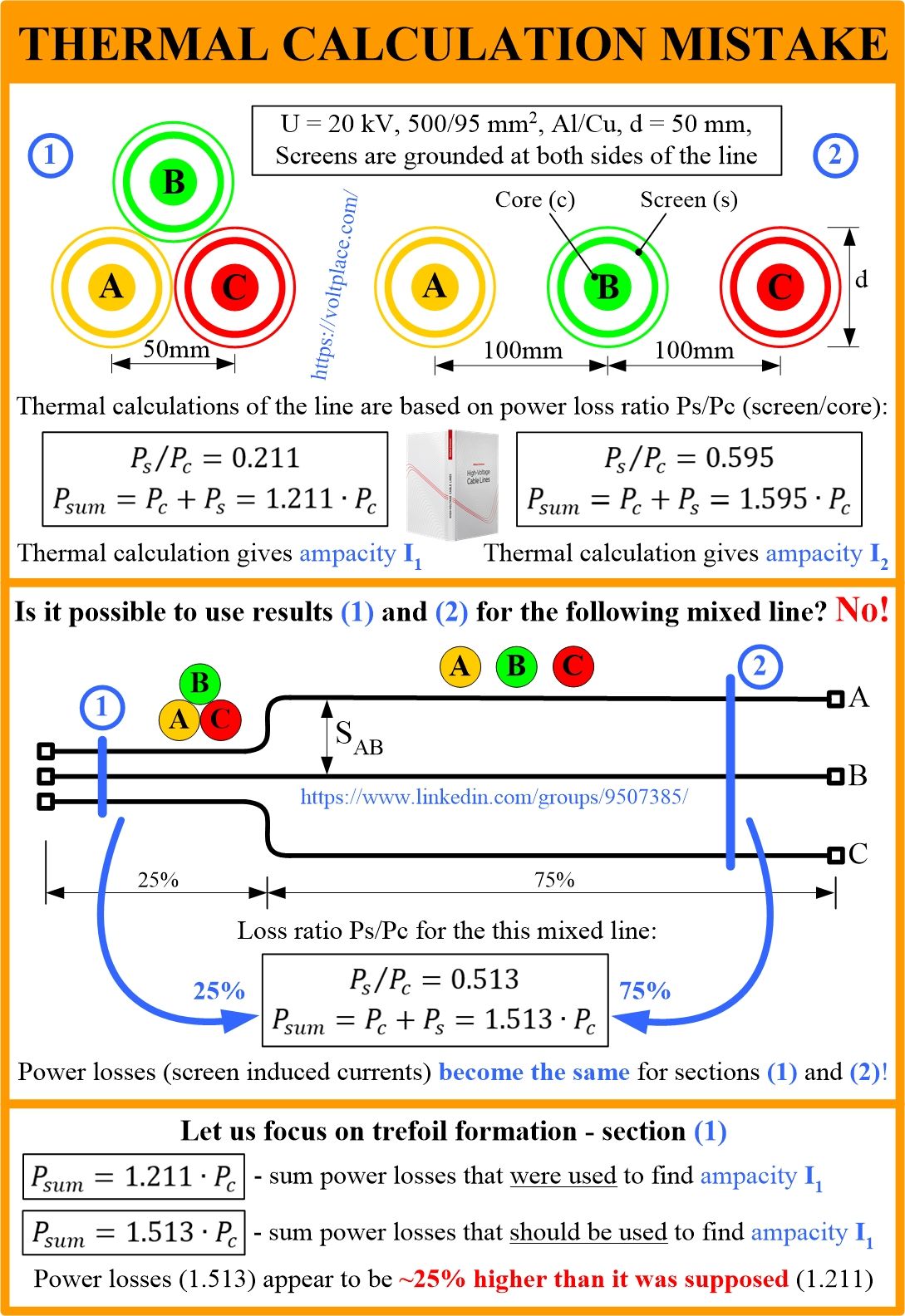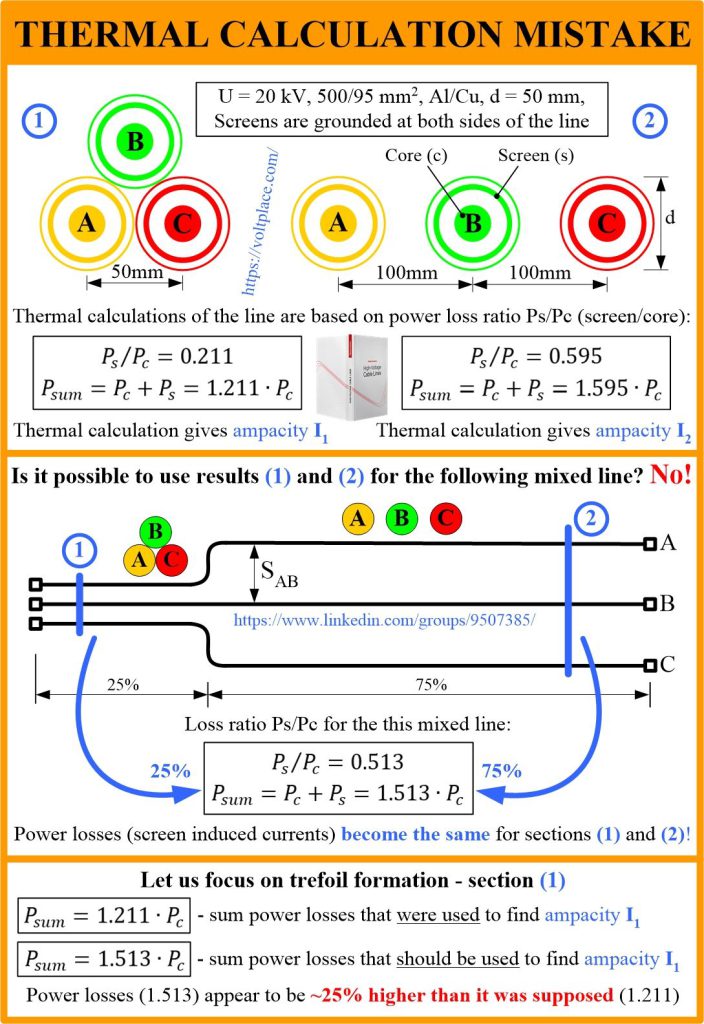
Cable ampacity calculation mistake
For medium voltage (MV) line, usually, screens of single-core cables are grounded at both sides. Let us assume that we have two separate MV lines, differing in the mutual arrangement of three single-core cables:
Line 1️⃣ – trefoil;
Line 2️⃣ – in row.
In the conditions of the example, according to the book, we get the following results:
1️⃣ – losses in screens (Ps) are equal to 0.211 of the losses in the cores (Pc);
2️⃣ – losses in screens (Ps) are equal to 0.595 of the losses in the cores (Pc).
After summing up the losses in the screens and in the cores, we get:
1️⃣ – total cable losses Psum=1.211*Pc;
2️⃣ – total cable losses Psum=1.595*Pc.
These loss values are necessary to perform a thermal calculation of the line and determine the permissible core currents (cable ampacity). Because, when performing a thermal calculation, it is important to correctly consider all sources of cable heating and its cooling conditions. As a result of thermal calculations (according to IEC 60289 or by software), the ampacities I1 and I2 can be found for two cable lines.

Now let us imagine that we do not have two separate cable lines 1️⃣ and 2️⃣, but one common one, along the route of which there are laying methods 1️⃣ and 2️⃣. Since the cable screens of the MV line are grounded on both sides, induced (circulating) currents pass through the screens, and these currents will be the same along the line, that is they are the same for laying options 1️⃣ and 2️⃣. In turn, this means that the losses in the screens and the total losses in the cables will become the same for 1️⃣ and 2️⃣.
So, while options 1️⃣ and 2️⃣were separate lines, there were different losses. However, when they became parts of the same mixed line, the losses in the sections became equal. That is, for mixed line, for option 1️⃣, losses increased, but for option 2️⃣, they decreased.
For the example under consideration, with the lengths of sections 25% and 75%, the losses for section 1️⃣ increased by about 24-25%. It is possible that this will lead to the fact that section 1️⃣ (trefoil) will be significantly overheated during operation.
NOW LET US GO VICEVERSA
Suppose we have MV cable line with screens grounded at both sides. Let us say there is a section of a trefoil 1️⃣ and a section of a row 2️⃣. How do we consider such a line? We split the task into two independent ones. That is:
Task 1️⃣ – we calculate trefoil; we get ampacity I1;
Task 2️⃣ – we calculate row; we get ampacity I2.
At the same time:
Task 1️⃣ – we assume that the losses correspond to trefoil;
Task 2️⃣ – we assume that the losses correspond to row.
Thus, we are making the mistake described in today’s post. When we perform thermal calculations for trefoil 1️⃣ and row 2️⃣, we should set the values of losses in screens not as separate for 1️⃣ and 2️⃣, but as averaged along the line. Otherwise, we will get an error of up to 25% or more.
You can discuss this and many other issues in LinkedIn cable group. Your opinion is important for the cable industry! Thank you
